As I read all these #OwnVoices books, I noticed that many revolved around the importance of family and food. In fact, they are intertwined together. Family recipes are passed down over generations. Grandmother cooking if not grandmother actually cooking. And it’s always love that binds the generations as well as the secret sauce for why the food is so delicioso.
But, I think #OwnVoices of all cultures have this same recipe because culture when it’s true and honest, comes down to family and food, and then builds out into a larger community. But Latinx #OwnVoices has something a little extra … a rhythm, a spirit of fun where everyone breaks out into dance simultaneously for no particular reason. AND everyone knows the steps of the dance! It’s kisses on cheeks too and the warmth of love unabashedly expressed in gestures and words.
There is generosity too. Of hospitality and an invitation to be an “uncle” or a “cousin” even if you are not actually related. And there is the food. If food is in the book, there are typically recipes in the back. It’s an invitation for you, the reader, no longer a stranger, to partake and enjoy. And please do! These are secret family recipes shared with love!
I was lucky to get a glimpse into this world through one of my best friends growing up who is half Mexican. I heard stories of her aunts and uncles and how everyone lived under one roof giving their paycheck to the matriarch until the last kid graduated from college. I ate the food. In fact, I (and my entire family) would stop by on Christmas day for freshly steamed tamales. Their family food traditions became my own. They are generous that way!
What #OwnVoices children’s books are you enjoying for Latino Heritage Month? Thanks for sharing!
60 #OwnVoices Children’s Books for Latinx Heritage Month
Boogie in the Bronx! words by Jackie Azúa Kramer, illustrated by Jana Glatt, music by Brian Amador, sung by Sol y Canto
Sing along to this rollicking counting song set in the Bronx and celebrate Latinx culture including dance and Spanish words. [singalong picture book ages 3 and up]
How to Speak in Spanglish by
Spanglish is a combination of both English and Spanish in a single sentence and this is Sami’s preferred way of speaking but Abuela says that Spanish and English don’t mix. Sami tries to speak only English but that doesn’t seem to work for him either because, again, not everyone understands what he is saying. Finally, he gets an idea to teach everyone how to speak Spanglish. At their multicultural potluck lunch, everyone discovers that mixing cultures is delicioso[picture book, ages 4 and up]
Benita and the Night Creatures by Mariana Llanos, illustrated by Cocoretto
Benita can’t be bothered by the night creatures that come out to scare her because she’s absorbed in her book. Baffled, the night creatures convene at this puzzling situation. They wonder what reading and books are. Benita introduces them to the magic of stories which they enjoy immensely. The end matter has more information about the South American night creatures. [picture book, ages 4 and up]
Still Dreaming: Seguimoms Soñando by Claudia Guadalupe Martínez, illustrated by Magdalena Mora
A young boy and his parents are forced to flee their home due to a dangerous political situation that threatens to break apart their family. They drive past empty houses; other families in the same situation have already left. At the Mexican border, they continue to dream and move forward but this is NOT crossing from Mexico to the United States. This is the story of the forced repatriation of Mexican Americans between 1930 and 1940 when more than 2 million people living in the United States were “repatriated” to Mexico. This persecution continues today. From 2009 to 2019, more than four million deportations have taken place including in my own community. [bilingual Spanish picture book, ages 4 and up]
Papá’s Magical Water-Jug Clock by Jesús Trejo, illustrated by Eliza Kinkz
I love this playful, exuberant, and humorous story of a boy helping his father with the family gardening business. To make the day fun, his Papá puts him in charge of the water jug and tells him that it’s magical; when it’s empty, it’s time to go home. The water gets used up quickly but it’s only 10:30 am and there are still eleven houses to go! His father explains that the water jug is just a regular old water jug, but no harm is done. The day working with his dad is just as fun without a magical water jug, and when it’s time to go home, the jug is empty for the second time! [picture book, ages 4 and up]
Rafa Counts on Papa by Joe Cepeda
Rafa loves to spend time with his papa. They especially like to measure things such as how high their dog can jump, which ball is the bounciest, and how long Rafa’s train is. But when it comes to love, they struggle to find a way to measure it. But with it comes to each other, their love may be difficult to measure but not hard to experience. [picture book, ages 4 and up]
Three Pockets Full: A Story of Love, Family, and Tradition by Cindy L. Rodriguez, illustrated by Begoña Fernández Corbalán
A wedding isn’t always the happiest of days. Beto’s Mami wants him to wear a guayabera, a traditional Mexican wedding shirt, but he refuses. This is a day of mixed emotions and it’s hard for Beto. When he tries to hide the guayabera, he and his Mami end up finding old family photos, and these memories help him to understand that this wedding doesn’t mean that his father will ever be forgotten. This is a story of grief & healing, new beginnings & old traditions, and it 100% tugs on your heartstrings. [picture book, ages 5 and up]
My Teacher Has Tattoos by Darren Lopez, illustrated by Bhagya Madanasinghe
Xavier and his classmates wonder what it means that their teacher has tattoos. His mother thinks tattoos are for people who are in a gang or have been in jail. When Xavier sees men with tattoos by the baseball field, he starts a conversation with his teacher about tattoos, stereotypes, and misconceptions. Use this book to talk about tattoos and the stigma often associated with them. [picture book, ages 5 and up]
La Mariachi by Isabel Estrada, illustrated by Addy Rivera Sonda
Tuchi wants to learn to play in a mariachi band but she is told that it’s only for boys. She’s not deterred. Shouldn’t music be for everyone? She finds a guitarron in the storage room and tells her nana about it. Her nana also wanted to be part of a mariachi band when she was younger but wasn’t allowed. She teaches Tuchi how to play the guitarron. When it’s time for the school mariachi audition, Tuchi is ready and gives an impressive performance. It turns out that she is right. Mariachi music is for everyone! [picture book, ages 5 and up]
Letters in Charcoal by Irene Vasco, illustrated by Juan Palomino
In a remote village in Columbia, most people can not read or write. A young girl decides to learn to unlock the mystery of the letters her older sister Gina receives from a young doctor who lived in their pueblo for a few months. She asks the shopkeeper to teach her and practices her alphabet using charcoal on the ground. Slowly, she begins to unlock the words, and it’s just in time to read the final letter for Gina from her doctor friend. [picture book, ages 5 and up]
Abuelita and I Make Flan by Adriana Hernandez Bergstrom
Today is Abuelo’s birthday and Anita and her Abuelita want to make a special flan to celebrate. It gets flipped onto a special crystal plate but when Anita went to get the plate, she slipped and accidentally broke the plate. She’s nervous to tell her Abuelita and compensates by being extra helpful. When it’s time to flip the flan, Anita confesses but Abuelita surprises her with her reaction. The flan plate that Anita broke was actually the replacement for the original one. In the end, it’s not the plate that matters but the people who make the flan with love in their hearts. And, the flan is delicious on a new special plate! [picture book, ages 5 and up]
Where Wonder Grows by Xelena González, illustrated by Adriana M. Garcia
Within the rocks, crystals, meteorites, and shells in Grandma’s garden are stories that she reveals to her granddaughters. Wonder blooms in each rock that was formed long before humans inhabited the earth, and each possesses knowledge. There is more information in the back matter about Indigenous cultures and how they used rocks in their ceremonies. [picture book, ages 3 and up]
The Mysterious Stones by Enrique Pérez Díaz, illustrated by Yayo
Kiki finds an old woman collecting mysterious stones on the rocky beach. His abuela tells him that she is the Lady of the Stones and that the stones have special powers. He misses his papa who has been out at sea for a very long time. When Kiki sees the Lady of the Stones again, he finds a pile of beautiful colored stones and places them in a jar with his abuela’s stones that she received from the Lady of the Stones when she was little. He decides to gift the Lady of the Stones sea glass. In return, she gifts him a seashell with a message of hope. The child-like illustrations match this story of simple times when everything is possible. [picture book, ages 4 and up]
Look Back! by Trish Cooke, illustrated by Caroline Binch
A loving grandmother shares the story of the mythical Ti Bolom with her grandson, Christopher. In the style of Dominica storytelling, there is a call and response from the reader to the listener –“Eh Kwik”, followed by “Eh Kwak!” She tells him that as a young girl, she almost caught Ti Bolom, a “little devil.” That night, Christopher tries to see Ti Bolom as well, using his grandmother’s trick of looking back through a reflective surface. Thus, stories in the oral tradition such as the one about Ti Bolom get passed from generation to generation in the Dominican Republic and elsewhere. I wish the reveal wasn’t shown so clearly. Either the devil is drawn to be too scary or not scary enough so the only real solution is to show a hint of it. This makes the ending somehow anticlimactic. [picture book, ages 6 and up]
A Gift From Abuela by Cecilia Ruiz
With a nod to Mexican history and currency inflation, this is a multi-generational story of that very special love between grandparents and grandchildren. Niña and her Abuela spent a lot of time together when she was young doing little happy things like singing silly songs, going to the park, and making paper banners. Abuela wanted to buy Niña something special so she had a special can where she put aside some pesos every week.
As Niña grew older, she spends less time with her grandmother, so one day she visits her and cleans her kitchen as a surprise. Niña finds the can of money, now worthless. But Niña has an idea of what to do with it that reminds her of the projects she did long ago. Together, they use the money to make something special. This picture book has a surprising depth and is a good reminder to cherish our relationships with our loved ones. [picture book, ages 4 and up]
Alma and How She Got Her Name by Juana Martinez-Neal
Alma has a very long name: Alma Sofia Esperanza José Pura Candela. She thinks it’s too long and doesn’t fit her so her father gives her the history of her ancestors, each of whom has contributed their name to hers. Sophia is her grandmother who taught her a love of books. Esperanza’s armchair traveled when her son became a sailor. José is her grandfather, an artist who painted portraits. Pura is her great-aunt who connects her to the spirits of her ancestors. Candela, another grandmother, was an activist. Alma decides that her name is just right, with a story of her own to contribute. The story of a name conveys an entire family history making it special and unique. This picture book is also a fun way to learn about Latino culture. [picture book, ages 4 and up]
All the Way to Havana by Margarita Engle, illustrated by Mike Curato
In Cuba, the cars are from the 1050s with replacement parts ingeniously created from whatever is available. A boy and his family take a road trip to Havana, Cuba in the family car. It’s an adventure both in seeing the surrounding sights and in hoping that the old car can make it there without breaking down. [picture book, ages 4 and up]
Maybe Something Beautiful: How Art Transformed a Neighborhood by
The city is a dreary gray, and one day a little girl brightens it up with her colorful drawings. This inspires an artist with a pocket full of paintbrushes. Soon, the entire neighborhood gets involved in creating a mural that spreads color and joy. As they painted, music filled the air. The color and dancing spread from the wall to the utility boxes and benches. As their gray city transformed, the people did too. They turned into artists. This is based on a true story. [picture book, ages 4 and up]
I have other public art artists on this list here: 10 Diverse Picture Books on Fine Artists.
Isabel and her Colores Go to School by Alexandra Alessandri, illustrated by Courtney Dawson
Isabel is nervous about starting school. Her new school will be in English but she only knows Spanish. She struggles all day, but when it is time for art, Isabel is able to communicate through her art and makes her first friend. [bilingual Spanish picture book, ages 5 and up]
Anita and the Dragons by Hannah Carmona, illustrated by Anna Cunha
It will be a new life in America for Anita and her family but she is not sure that she wants to go. The dragons in the sky — the airplanes — scare her. Leaving the Dominican Republic is hard, especially leaving Abuela behind, but Anita decides that she is not just a brave princesa but a fearless dragon. [picture book, ages 7 and up]
Lucky Luis by Gary Soto, illustrated by Rhode Montijo
Luis worries about baseball tryouts because his father was a champ. For good luck, his father always wore his belt buckle to one side. Luis thinks samples at the supermarket are helping his game. When he doesn’t get to go to the market or when the samples are all gone, he plays poorly. His dad thinks Luis doesn’t need to worry about superstitions and just focus on what the coach says. Luis tries … and it finally works. This picture book sneaks into Latino culture through the food that Luis samples and is a great reminder that while baseball is America’s favorite pastime, many Hall of Fame players hail from Latin America. [picture book, ages 4 and up]
Kusikiy, A Child from Taquile, Peru by Mercedes Cecilia
Mercedes Cecilia has created a modern myth in the tradition of oral storytellers about a boy who brings the rain back to Taquile, Peru. Told in lyrical prose, this picture book reflects the connection the people of Taquile have to Mother Earth and their elders. This is a wonderful picture book to learn about Peru. [picture book, ages 6 and up]
Dreamers by Yuyi Morales
Dreamers are Yuyi Morales’ personal journey of immigrating to the United States, not speaking English, and then having to live here with her husband and young son in order to get her permanent resident status. The public library became a refuge for them, both to expose them to English and to the world of picture books. I love how the books that were the most important to her are included in the illustrations. Yuyi also includes her book list in the back. This is a beautiful and powerful story of the dreams of immigrants. [picture book, ages 4 and up]
 Imagine! by Raúl Colón
Imagine! by Raúl Colón
This is Raúl Colón’s own story of a creative explosion when he visited his first art museum, The Museum of Modern Art. A young boy’s life is changed forever when he walks into an art museum and the paintings come alive for him. This wordless picture book is a tribute to the power of art and artists who boldly put forth ideas to define artistic expression in new ways, inspiring generations to come. [wordless picture book, ages 4 and up]
Here is our tour of MOMA (Museum of Modern Art) as part of a whirlwind but perfect day in NYC! I have to say that the MOMA is a creative explosion of ideas, with one of the finest and most inspirational art collections in the world. I took photos of my favorites and hope you enjoy them too.
Rita & Ralph’s Rotten Day by Carmen Agra Deedy, illustrated by Pete Oswald
Best friends Rita and Ralph get into a fight and it’s the worst 24 hours of their lives. They try to make up several times, but it goes awry. Finally, they meet in the middle and apologize to each other. Best friends always find a way to make up. I loved this adorable and relatable story based on a hand game called Mr. Wiggle & Mr. Waggle. Carmen Agra Deedy’s playful story also has a message about the ups and downs of friendships. [picture book, ages 4 and up]
My Two Border Towns by David Bowles, illustrated by Erika Meza
A boy and his father live in the United States near the border of Mexico. With their passports, they can travel freely back and forth to run errands in Mexico. On their way home, they stop to help those who are hoping to cross into the United States. [picture book, ages 4 and up]
Danza!: Amalia Hernández and Mexico’s Folkloric Ballet by Duncan Tonatiah
Amalia Hernández created El Ballet Folklórico de México, a dance troupe that celebrated regional and indigenous dances of Mexico. A dancer and choreographer, Amalia combined ballet and modern dance with folkloric dances. reflecting the traditional culture of Mexico in a new and exciting way. Tonatiah details how Hernández became a dancer as a child and how she was inspired to start this international sensation dance group. His illustration, inspired by pre-Columbian art, matches perfectly with the aesthetic of El Ballet Folklórico de México dance. [picture book biography, ages 6 and up]
Sing with Me: The Story of Selena Quintanilla by Diana Lopez, illustrated by Teresa Martinez
Selena rose to stardom despite her family’s hardship when they lost their restaurant and home due to the 1980 recession. They bought a bus and toured as a family. An even bigger barrier for Selena was breaking into the male-dominated world of Tejano music. For this, she had to learn to speak Spanish and persevere when she was told no. She would eventually win thirty-six Tejano music awards. [picture book biography, ages 4 and up]
Martí’s Song for Freedom / Martí y sus versos por la libertad by Emma Otheguy, illustrated by Beatriz Vidal
José Martí was a freedom fighter who fought with words through writing and poetry as well as an actual soldier, not your typical mix. Born and raised in Cuba, he had deep empathy for those he saw enslaved to work the sugarcane fields, owned by the Spanish who colonized Cuba. In 1868, the Cuban people fought to free themselves of Spanish rule. José was imprisoned at a work camp and then exiled to New York. He continued to fight on behalf of his people, raising money and recruiting supporters. He also continued to write poetry, inspired by the Catskill mountains that reminded him of home. José returned to Cuba to join in a new war for independence and was killed in battle. His poetry lives on, singing of freedom. Emma Otheguy captures José Martí’s life fighting for the oppressed in lyrical prose. He’s an inspiration that as a gentle and deeply empathic poet, he could fuel a revolution. [bilingual Spanish and English picture book, ages 7 and up]
Drum Dream Girl: How One Girl’s Courage Changed Music by Margarita Engle, illustrated by Rafael López
The Drum Dream Girl is of Chinese-African-Cuban mixed-race ancestry and all these cultures inspire her to drum. The dragon dance drummers of her Chinese ancestors. The conga, bongó, and timbales come from her Latin and African roots, and the rhythms beckon to her. Her sisters invite her to join their all-girl dance band but her father says that only boys should play drums. Until he changes his mind and finds her a teacher that will teach girls that help her unlock her talent. Now, when people hear her play drums, everyone agrees that girls should always be allowed to play drums.
Told in lyrical free verse, Margarita Engle tells an inspiring story for girls everywhere that they should be able to be anything they want to be. Just like the Drum Dream Girl! [picture book, ages 4 and up]
Frida Kahlo and Her Animalitos by Monica Brown, illustrated by John Parra
Frida is famous as an artist and for her vast number of pets: two monkeys, a parrot, three dogs, two turkeys, an eagle, a cat, and a fawn. She treated them like her children perhaps because she was unable to have children of her own after the terrible bus accident she was in. Her pets were also her inspiration and were featured in many of her more than two hundred paintings. [picture book, ages 4 and up]
This painting by Frida Kahlo is from the Museum of Modern Art!
Turning Pages: My Life Story by Sonia Sotomayor
It’s a treat to have a children’s autobiography told in Sonia Sotomayor’s own words. Reading this book feels like meeting her. She gives us an intimate look into what shaped her life which had challenges that she rose above, buoyed by books. They were the windows and doors that opened opportunities for her and gave her a place of sanctuary. She also gives us insight into why she became a judge and how she views justice. I won’t be surprised if this book inspires kids to become a judge. After all, it was the power of books that inspired Sonia Sotomayor to dream this huge dream that came true! [picture book, ages 4 and up]
How to Hear the Universe: Gaby González and the Search for Einstein’s Ripples in Space-Time by Patricia Valdez, illustrated by Sara Palacios
Albert Einstein had a theory about space-time. He thought colliding stars could cause ripples in space-time. Fifty years later, Gaby González wondered the same thing and set out to prove it. Scientists like herself were building big machines called LIGO to help detect ripples in space-time. When two black holes collided, the ripples were recorded by LIGO. Gaby and her LIGO team proved that Einstein was right! [picture book biography, ages 6 and up]
Portraits of Hispanic American Heroes by Juan Felipe Herrera, illustrated by Raúl Colón
The historical figures are presented chronologically but I think to hold young readers’ interest, it makes more sense to skip around, targeting their interests. For example, young athletes will find Roberto Clemente’s story fascinating as someone who broke color barriers in major league baseball and devoted his life to philanthropy. Jaime Alfonso Escalante’s story is portrayed in the movie Stand and Deliver, but the movie doesn’t cover his earlier life about how he came to be a teacher in the inner city. Street artist Judith F. Baca might be more recognizable for her urban murals including The Great Wall of Los Angeles. Others might be more well-known such as supreme court judge Sonia Sotomayer, astronaut Ellen Ochoa, and singer Joan Baez. This is a great introduction to Hispanic notables that will undoubtedly have some kids searching for more information on their favorites. [nonfiction chapter book, ages 8 and up]
Lola Levine series by Monica Brown, illustrated by Angela Dominguez
Lola Levine is excited! This summer break she is getting a kitten. But Lola’s happiness soon turns to distress when she realizes her little brother might be allergic to her new pet.
I love that Lola is an animal lover, and while she makes a judgment error when trying to keep her pet, she realizes her mistake and makes amends. [early chapter book series, ages 6 and up]
Juana & Lucas by Juana Medina
This is a delightful Early Chapter Book. Kids will delight in meeting Juana, a girl with strong likes and dislikes that everyone can relate to. She lives in Bogetá, Columbia and this is the year that her class starts learning English! It’s a fun twist to realize that kids in other countries might detest learning English as a second language. Juana spends a great deal of time trying to strengthen her case on why she doesn’t need to learn English which might sound familiar to kids in the United States who dislike learning foreign languages. In the end, Juana is motivated by a trip to an American theme park by applying herself to learning English. And it’s totally worth it!
Peppered with Spanish words and illustrated with charming cartoon illustrations, this is a fun way to introduce kids to Spanish! [early chapter book, ages 6 and up]
Stella Diaz Has Something To Say by Angela Dominguez
Stella thinks that having a green card as a resident alien might have something to do with not feeling like she fits in. Like her pet Betta fish, she feels a sense of isolation. But this is the year that Stella stands up to the girl bully, makes new friends, and finds her voice at school. Deep inside, Stella knows that she’s a great artist, and is good at math and spelling. Her older brother is nice most of the time, but then there’s her absentee and unreliable father.
Drawing on her upbringing as a Mexican American immigrant, Angela Dominguez writes a story that starts off quietly but builds to a crescendo in the same way as Stella’s own story of self-discovery and self-confidence. Dominguez successfully weaves storylines of single parenting, speech therapy classes, and making new friends making this a Latinx #OwnVoices story with wide appeal. Readers will root for Stella and leave with a stronger sense of empathy for kids who are shy or speak with an accent. [early chapter book, ages 6 and up]
Salsa Stories by Lulu Delacre
This is the perfect book to celebrate Latino Heritage Month. While there are many countries with their own history and culture in Latin America, all have a strong sense of family and distinct and delicious regional cuisine. Salsa Stories combines both elements in this series of stories that cover many Latino countries: Guatemala, Cuba, Puerto Rico, Argentina, Mexico, and Peru.
The stories are told in the context of a family gathering, sharing stories of their youth to young Carmen Teresa who has just received a blank journal as a gift. Instead of creating a book of their stories, Carmen Teresa has a better idea. Because she loves to cook, she wants the family recipes described in each story. This is a delicious way to celebrate Latino Heritage Month and recipes are included in the back! [early chapter book, ages 7 and up]
Land of the Cranes by Aida Salazar
Review by Ms. Yingling Reads:
“This is an excellent and timely novel about the horrific plight of detained immigrants that might be best introduced to younger readers with some support and back story about the treatment of immigrants in the US. We need more stories like this and Efrén Divided by Ernesto Cisneros.” [middle grade, ages 8 and up]
Wish Upon a Stray by  Yamile Saied Méndez
Yamile Saied Méndez
Review from Ms. Yingling Reads:
“I have a lot of students who come from other countries, and many times they are quite homesick! It’s a lot more common to have stories of second-generation immigrants in middle-grade stories, so it was interesting to see the procedures involved in coming to the US and to see María Emilia’s struggles with school and a new way of life. The endnotes indicate that this is somewhat autobiographical, which would explain why the details are so good. I very much appreciated that while María Emilia is sad about some things, she also tries to make the best of her new life.” [middle grade, ages 8 and up]
Chasing Jaguars (Wild Survival #3) by Melissa Cristina Márquez
Review by Ms. Yingling Reads:
“The Villalobos family is back for another adventure after Crocodile Rescue and Swimming with Sharks. Adrianna and her brother Feye are still worried about the poachers they’ve seen in both stories, and the involvement of their producer, Mr. Savage, with these people. They are excited to head to Mexico on their latest adventure since they have their father’s family there (their mother is from Puerto Rico). They are trying to locate an injured and endangered jaguar and help it, but when they arrive, they find that local farmers are not happy with the jaguar population, because their livestock are targets of the predatory animals. They get help from Daniela Corrales Gutiérrez, a local scientist, and her children, Mónica and Leo. Gutiérrez is tagging and tracking jaguars with satellite collars in order to protect the population, and also uses cameras to check on the animals in the wild. The group also goes to visit Gutiérrez’s husband, Manolo, who studies endangered porpoises, the vaquita. While there, Adrianna gets stung by a poisonous scorpion, and when the crew’s first aid kit is out of anti-venom, has a scary experience with her arm going numb. Luckily, despite some lingering pain, the injury is not too severe. Will she and her family be able to find the injured jaguar, or will the poachers reappear and get to it first?” [middle grade, ages 8 and up]
The Do-Over by Julia Torres
Review by Ms. Yingling Reads:
“6th graders Lucinda and Raquel Mendoza are twins who usually get along, but since the pandemic hit and the two have to stay home from school, they are getting on each other’s nerves. This started when their parents got divorced and their father moved to the country. Their mother works in a hair salon and has been able to keep a little business by selling product packages to customers, but when a neighbor in their apartment building becomes ill, moving the girls in with their dad sounds like a safer option. Lucinda is angry because she figure skates, but the rink is shut down. Raquel has thrown herself into online school and also has frequent meetings with her newspaper club. When the plans start to be made to send the girls to their dads, she comes up with a plan of her own– to get her mother to go with them and reconnect with their father. The catch? Dad’s girlfriend, Sylvia, and her daughter Juliette are living with his because of the pandemic. When Juliette becomes ill and has to be isolated in the garage apartment with her mother, will it be enough to encourage their parents to get back together?” [middle grade, ages 8 and up]
Ellen Ochoa: Hispanic Star series by Claudia Romo Edelman, illustrated by Nathalie Alonso
Ellen Ochoa has many firsts to her name including the first Hispanic woman to travel to outer space. Her journey to becoming an astronaut started in Los Angeles, California where she discovered her love for science, particularly physics. Her academic achievements as an electrical engineer led her to become an astronaut aboard the space shuttle Discovery. It was onboard the Discovery that she had another first, performing a concert on her flute! [middle grade biography, ages 8 and up]
Sonia Sotomayor: Hispanic Star series by Claudia Romo Edelman, illustrated by Nathalie Alonso
Delve into the childhood of Supreme Court Justice Sonia Sotomayor from where she grew up in New York’s Bronx, to her academic achievements that led her to a career in law. This series comes in both Spanish and English. [Spanish middle grade biography, ages 8 and up]
On These Magic Shores by  Yamile Saied Ménde
Yamile Saied Ménde
Review from Ms. Yingling Reads:
“For some reason, middle school students like to read about children who need to take care of themselves; I always refer to it as the Boxcar Children Effect. It is not something that would be good to have to do in real life, but it’s interesting to think about. Readers in a similar home situation will feel seen, and readers who have not experienced this will feel lucky. Minerva is a great character who really thinks through her situation and deals with it the best she can. She reaches out to a support network when she is at the end of her resources. This is an important picture of the situation that many tween students live on a daily basis, and a good reminder that sometimes problems in class reflect this often unexplored reality.” [middle grade, ages 9 and up]
Barefoot Dreams of Petra Luna by Alma P. Dodds
Review by Ms. Yingling Reads:
“Things are difficult in Mexico in 1913, especially for Petra’s family. Her mother died when her baby brother Luisito was born, and since her father was taken away by soldiers during the revolution, her abuelita is taking care of her and her sister Amelia as well. When Federales attack Petra’s village, the family flees before their house is burned. Before her father left, Petra promised to keep her family safe, so she takes them across the countryside before seeking refuge at a church. There, she meets a girl named Adeline who is from the US, and who is trying to get back there with her mother. She asks Petra to go with them, but Petra is determined to get her whole family to the US. The journey is arduous and tears up their feet, but they persevere. When Luisito becomes feverish, however, they stop seeking aid from soldiers. A woman named Marietta helps them, and they receive food and medical care. Marietta is a soldada, a woman soldier, with the revolutionaries working with Pancho Villa. Impressed by Petra’s determination, she asks Petra to become a soldier as well, but Petra again decides to stay with her family, even though her family could have become soldaderas, who cooked and kept the soldiers going. Since Petra also has a dream to become educated and break away from the social systems that kept her family in poverty, they press on until they come to a border town. There they find many people trying to get across a bridge into the US. The bridge closes, the cost to get across skyrockets, and it’s all Petra can do to keep her family fed. Will she be able to find a way to get them across the border to a better life? ” [middle grade, ages 8 and up]
The One Who Loves You Most by Medina
Review by Ms. Yingling Reads:
“This could be used as a textbook on how to properly ask about and address people whose exterior appearance might not align with their inner identifications. Many of the characters are within the LGBTQIA+ spectrum, and Gabriela learns a lot about describing what she feels from other people, books, and YouTube videos. There is some information about her mother’s mental health condition, and she does get help after a somewhat accidental overdose of sleeping pills. The school is very supportive, and the students who exhibit bullying behavior are dealt with firmly and constructively.” [middle grade, ages 8 and up]
Cuba in My Pocket by Andrianna Cuevas
Review by Ms. Yingling Reads:
“This is a fascinating time in history and even addresses the Bay of Pigs invasion, which I knew very little about. The depiction of everyday life in Cuba, especially Cumba’s experiences hanging out with friends and at school, makes the story even more poignant once things start to break down, and will help young readers to understand why coming to the US isn’t Cumba’s preference. Life in the US is depicted as challenging but in some ways a relief. It was interesting that he does make friends with the other immigrants at Benitez and even ends up in school with a former classmate in Key Largo. The story moved along at an excellent pace and alternated nicely between Cumba’s concerns for his family and his experiences navigating his new country. The fact that this is based on the author’s father’s life makes this really sing. ” [middle grade, ages 8 and up]
Esperanza Rising  by Pam Muñoz Ryan
by Pam Muñoz Ryan
This is the story of Pam Muñoz Ryan’s grandmother, and it’s an epic riches-to-rags story across two countries. Tragedy strikes when Esperanza’s father dies, and his evil brother tries to take control of his lands. Esperanza and her mother escape from him, leaving Mexico for the United States. But life is hard in the United States compared to the life of luxury Esperanza enjoyed. When her mother gets sick, she must work as an itinerant farm worker to earn money for medicine and food. Her past is with her as well. Pablo, a boy who worked for her family, also immigrates to the U.S. Though she wanted to marry him as a child, she rejects him as too poor. But here in America, the rules of class that she adhered to are gone. Can Esperanza rise from her past life of entitlement to this new world order? [chapter book, ages 8 and up]
Frizzy by Claribel Ortega
Review from Ms. Yingling Reads:
“In this graphic novel, we meet Marlene, whose least favorite thing is to go to the salon once a week with her mother in order to “tame” her curly hair. This involves setting it on rollers and sitting under a dryer until it is straight. Of course, if Marlene goes out in the weather or sweats, her hair reverts to its naturally curly and “frizzy” nature. Her mother, who has “good” hair doesn’t like to spend the extra money going back to the salon, so she is often angry with Marlene for ruining her hair. This is especially evident when the two attend a cousin’s Quinceanera. Marlene dances and enjoys herself, but gets sweaty in the process, and her mother is not happy with how she looks in the family pictures. After some trouble at school, Marlene complains to her mother that straight hair or braids are not making her happy, and some information about her mother’s own relationship with her hair, as well as the family history, comes out. Marlene spends a weekend with her Tía Ruby learning how to care.” [graphic novel, ages 9 and up]
Miosotis Flores Never Forgets by Hilda Eunice Burgos
Review by Ms. Yingling Reads:
“Some middle grade readers are really enthralled by the idea of weddings and would enjoy hearing about Amarilis’ planning. The desire for a dog is definitely strong in middle school, and many readers are right where Miosotis is at in their attempts to be allowed to adopt a pet. I liked the fact that the grandmother lived with the family, and her cultural prejudices toward different complexions and types of hair are handled fairly well. My favorite part was Gina and Mabel’s different rescues that they are fostering– that’s my plan for retirement! The father is solidly supportive and eventually comes around to understanding his youngest child a bit more. It was interesting to see how the family handled anniversaries concerning the mother, and how Miosotis really didn’t miss the mother she had never met. This moved quickly, progressed in an easy-to-understand way, and had a bit of suspense to it that kept me turning the pages.” [middle grade, ages 9 and up]
Love, Amalia by Alam Flor Ada & Gabriel M. Zubizarreta
It’s bad enough that Amalia’s best friend moves far away without much notice, but then her beloved Abuelita dies. Her Abuelita took care of her after school every day, teaching her how to cook, and sharing stories of Abuelita’s children, now fully grown and living in far-flung places. Abuelita’s death brings the relatives back to Chicago where Amalia can finally put a face to the stories. The letters that Abuelita saved from her children are passed on to Amalia, and they make her realize her connection to her grandmother will never be lost. It’s this realization that makes her finally ready to reconnect with her best friend.
This quiet story has the warmth of a grandmother’s loving wisdom and would be comforting to anyone who has suffered loss either through a friend moving away, or a death in the family. [chapter book, ages 8 and up]
Cece Rios and the Desert of Souls by Kaela Rivera
Review by Ms. Yingling Reads:
“Cece lives in the small town of Tierra del Sol with her parents and older sister Juana. When she is young, she wanders off into the desert when she is watching a sunset with other children and is approached by a criatura. Luckily, it is Tzitzimitl, who is a protector of human children, but she curses Cece, who is considered a bit suspicious by her family, who worries that she will become a bruja like her aunt. When her sister Juana dances in the Amenazante celebration, she is stolen away by el Sombreron, the Bride Stealer. Cece is unable to save her sister but tries to figure out a way that she can get her back. She is aided by a criatura she saved from starving, Coyote, who agrees to work with her so that she can join the battle of the brujas and be able to go through the Devil’s Alley and win her sister back. Cece doesn’t want to be a bruja– they are considered evil because they capture the souls of criaturas and keep them in their power. Cece has the ancestry, as well as the ability, to do well against the other brujas, but she doesn’t want to join them. Luckily, her kindness wins her help from other criaturas, including Little Lion and Ocelot, and she manages to keep up the quest for her sister without her family knowing that she is running with creatures they consider evil. Will she be able to build her powers, get her sister back, and keep the peace with the family she loves?” [middle grade, ages 8 and up]
How Tia Lola Came to Visit Stay series by Julia Alvarez
Think Mary Poppins + All-of-a-Kind Family but set it in Vermont. And add in Spanish culture and language from the Dominican Republic. There isn’t the magical realism of Mary Poppins but Tia Lola makes her own kind of magic with the charm of her outgoing and perceptive personality. She might need to learn English, but she can connect with anyone. Miguel and his younger sister Juanita moved to Vermont with their mother after their parents’ divorce. Tia Lola, who raised their mother, is coming to help out. The children miss their papi in New York City, but Tia Lola is willing to chaperone a trip there. Told in short stories that stand alone, this is a charming story of a loving family balancing two cultures. While there aren’t any recipes included, the food described in the book will make you want to visit the Dominican Republic or at least a restaurant serving these delicacies. [chapter book, ages 8 and up]
The Epic Fail of Arturo Zamora by Pablo Cartaya
“His (José Martí) poetry is political but full of love and hope,” she said and I nodded. But really, I had no idea what she was talking about.
With a fresh contemporary voice, Pablo Cartaya creates a story about real estate gentrification and young romance that happens to be set in a multigenerational family that both lives together in an apartment complex and works together at the family restaurant. Arturo Zamora is a typical middle school kid who happens to be a third-generation Cuban American. His family’s restaurant, a bedrock of the community, is threatened when a slick real estate developer comes to town. There is also a middle-school romance in this book that is sweetly awkward and provides comic humor throughout the book.
Cuban culture is laced throughout this. I liked the connection to the poetry of José Martí that Pablo’s Abuela and his love interest, Carmen, both love. (Pair with Martí’s Song for Freedom to explore further.) A story about a Cuban family restaurant would not be complete without descriptions of food and there are also recipes in the back! There is something for every reader in this book, and I highly recommend it! [chapter book, ages 9 and up]
The Last Beekeeper by Pablo Cartaya
Review by Ms. Yingling Reads:
“Yolanda is a great character who wants to become educated as a way to get away from the grueling life of farming in a world badly damaged by climate change and strife. Her professor and fellow students try to sabotage her at every turn, but she is dedicated to learning more about technology so that she can help others, as well as herself. Cami’s reticence is understandable, given the trauma in her past, but she eventually learns to communicate with her sister. The Blackburns are clearly villains in the most classic sense, but the Mayor is delightfully oily and seemingly nice, which always makes for a much scarier villain, in my opinion” [middle grade, ages 8 and up]
The First Rule of Punk by Celia C. Pérez
“You nervous about school?”
“Nope,” I said and gave her a big, fake smile. “It’s always been my dream to be the new kid in seventh grade.”
The first rule of punk is that there are no rules. The second rule of punk is not that the louder, the better. It’s being yourself. I am so impressed with this modern portrayal of a mixed-race Latina girl. It’s so unexpected, this mix of Mexican punk rock, ‘zines, starting a new school, dealing with a queen bee girl bully, divorced parents, and finding your own lane of expression that straddles two cultures. There are no stereotypes or tropes to be found, yet there is a plethora of Latinx culture from Folklorica Dance to José Martí to Frida Kahlo to Mexican musical genres. Malu is a character that will stay with you for a long time. Celia C. Pérez does a really good job portraying girl bullying in a nuanced way where no one is all bad or all good, and interactions show external and internal conflict. This is my favorite middle-grade book on this list and what I’ve read all year. It had broad appeal for girls and boys and it imparts a sneaky but impressive amount of knowledge about Latinx culture in a way that sticks and makes the reader want to learn more. My only complaint is that the cover doesn’t do justice to the book. It reads too young and too cartoony. Malu is cooler than this girl and she dresses in a more interesting way. Also, the book seems thicker and longer than it really is since Malu’s ‘zines are part of the book (and a very appealing part as well) but they do add to the page count. [chapter book, ages 9 and up]
Merci Suárez Changes Gears by Meg Medina
Merci Suárez attends a private school on scholarship which makes her feel like a second-class citizen. She has to do extra community service including The Sunshine Buddies where she gets paired with a boy that the girl who bullies her has a crush on. Merci would rather play soccer but now her family won’t let her try out for the school team because her grandfather needs help. No one tells her exactly what is going on, but it seems that her Lolo acts strange sometimes, wandering off or getting angry for no reason. This coming-of-age story sometimes feels like it’s really geared toward the middle-grade audience. The reference to Vanna White of The Wheel of Fortune game show, for example, won’t resonate with most young readers as it’s before their time. Still, those readers who like a coming-of-age story that is steeped in the realism of everyday struggle will relate to Merci Suárez as she tries to find her place at school and at home.
There’s a lot in common between Merci Suárez Changes Gears and The First Rule of Punk. Both girls are experiencing transitions at school and have to deal with girl bullies. I would describe The First Rule of Punk as cinematic and Merci Suárez as a documentary. The former is more light-hearted, and the latter is more somber. [chapter book, ages 9 and up]
The Other Half of Happy by Rebecca Balcarcel
“Quijana is a girl in pieces. One-half Guatemalan, one-half American: When Quijana’s Guatemalan cousins move to town, her dad seems ashamed that she doesn’t know more about her family’s heritage. One-half crush, one-half buddy: When Quijana meets Zuri and Jayden, she knows she’s found her true friends. But she can’t help the growing feelings she has for Jayden. One-half kid, one-half grown-up: Quijana spends her nights Skyping with her ailing grandmother and trying to figure out what’s going on with her increasingly hard-to-reach brother. In the course of this immersive and beautifully written novel, Quijana must figure out which parts of herself are most important, and which pieces come together to make her whole. This lyrical debut from Rebecca Balcárcel is a heartfelt poetic portrayal of a girl growing up, fitting in, and learning what it means to belong.” from the publisher [middle grade, ages 9 and up]
Efrén Divided by Ernesto Cisneros
“We need books to break open our hearts so that we might feel more deeply so that we might be more human in these unkind times. This is a book doing work of the spirit in a time of darkness.” —Sandra Cisneros, author of The House on Mango Street
Review by Ms. Yingling Reads:
“It is a delicate balance to portray the difficult realities of Efrén’s life so that the story is hopeful to readers who might be in similar circumstances but sympathetic to readers who might not come to the book with positive thoughts about undocumented immigrants. (And unfortunately, there are readers like that, even in middle school.) Cisneros draws on his twenty-plus years as a teacher to achieve this balance in a compelling story that will help those unfamiliar with Efrén’s way of life understand it. The details about parents working long hours, children taking care of siblings, and students trying to keep up with schoolwork while struggling with basic needs are well done, and the supporting characters reflect a variety of experiences, including a teacher who tries to help Efrén without being too intrusive. (Another delicate balance.) I’d love to see this book used as a core novel or as a reading group choice, along with Weeks and Varadarajan’s Save Me a Seat and Gratz’s Refugee.” [middle grade, ages 8 and up]
Santiago’s Road Home by Alexandra Diaz
Review by Ms. Yingling Reads:
“This will appeal to readers for many different reasons. It addresses a current concern about the treatment of immigrants, it is a survival story, and it shows a child trying to create his own family when the one he started with does not meet his needs. My students have a very specific type of struggle that appeals to them, and Santiago’s trials all fit that category. He flees an abusive situation, has a dangerous road trip, and has to deal with the trauma of being in an institution that is not looking out for his best interest. Fast-paced, interesting, and very, very timely story.” [middle grade, ages 10 and up]
The Dream Weavers by Raina Luz Alegre
by Raina Luz Alegre
Review by Ms. Yingling Reads:
“This book made me so happy! First, there was the bowling and the bowling alley. Poppy’s handling of the business seems very realistic, and I’m sure that such a property would be targeted by developers. I loved the way Zoey and her friends helped spruce it up, but the best part was what Poppy ended up doing in the end. Perfect! José was a great older brother, the father and Poppy didn’t get along for very good reasons, and the portrayal of grief was just right. Isa and Lacey were great fun, and I loved that the girls became friends, bonding over a shared interest in bowling despite their differences. This had everything I want in a middle-grade book; children who have interests and DO things, friend and family drama, an unusual and intriguing setting, and a nice cultural connection, with Poppy’s Cuban background.” [middle grade, ages 8 and up]
Love Sugar Magic: A Dash of Trouble by Anna Meriano
For kids who like the TV show Wizards of Waverly Place, this chapter book has the same light-hearted magic but with more Latino culture. Leo (Leonora) is the youngest sister in the Logrono family. They own a panaderia (bakery) that makes the most delicious pan dulce, cookies, and cakes around. Leo isn’t allowed to skip school to help prepare for their busiest day, Dia de Los Muertes so she sneaks out of school to check on the bakery when it seems suspiciously dark. She discovers that her family is brujas (witches), and their kitchen magic adds a special ingredient to their baked goods. She learns that she’s still too young to learn about magic so she decides to learn on her own. Unfortunately, when she tries out her magic to help a friend, things get out of control. This is a fun series for anyone who ever felt that they were the last to try things in their family! You can also try some magic on your own! Recipes are included in the back for cookies, Pan De Muerto Mensajaro (a type of sweet bread), and Alegrías (Amaranth bars) which do not require cooking.[chapter book, ages 8 and up]
Not Latinx #OwnVoices but Highly Recommended
My Brigadista Year by Katherine Paterson
In 1961, Fidel Castro vowed to eliminate illiteracy in Cuba in just twelve months. He created an army of volunteer teachers, many of them as young as ten. In this story, Lora is thirteen years old and moves to the countryside with her battalion to teach adults in a farming village. It’s not just a difficult task but a dangerous one. The battle for literacy included fighting insurgent soldiers intent on derailing this effort by killing the young teachers. The literacy movement taught more than 700,000 Cubans to read and write. Cuba’s literacy rate continues to be one of the highest in the world at 99.75%.
Katherine Paterson’s closest Cuban friend, Dr. Emilia Gallego, was a brigadista as a teenager and provided insight as well as arranged her trips to Cuba. Learn more here. [chapter book, ages 8 and up]
Accused of Sexual Misconduct
Matt de la Pena
Accusation 1: “I wonder if any of Matt de la Pena’s students have weighed in. A friend took a writing class with him and recounted several tales of transactional sexual relationships with his students and creepy behavior.”
Accusation 2: “I didn’t respond to Anne’s survey but Matt de la Pena is someone to steer clear of.”
Accusation 3: “Matt de la Peña. You are powerful and respected in this industry, you should be ashamed of the way you speak to and treat female students. Your business is how we write, not how we look. Among several inappropriate comments, you minimized me down to my appearance in a moment of my education that I worked hard for, which should have been one of my proudest. You made me feel small and objectified. I resent it. I am not shocked to see that I am not the only student you abused your power over.”
Matt de la Pena, hasn’t had time to offer an apology in between all of his speaking engagements, but he somehow found time to change his bio. He no longer considers himself a “love doctor.”
Junot Diaz
Pulitzer Prize-winning author Junot Diaz accused of sexual misconduct, misogynistic behavior
As a grad student, I invited Junot Diaz to speak to a workshop on issues of representation in literature. I was an unknown wide-eyed 26 yo, and he used it as an opportunity to corner and forcibly kiss me. I’m far from the only one he’s done this 2, I refuse to be silent anymore.
After allegations of sexual misconduct, Junot Díaz is a cautionary tale on the trouble with tokenism
David Diaz
“As for Mr. Diaz, he temporarily left the Society of Children’s Book Writers a few years ago after a woman complained to the leadership that he had made her feel uncomfortable. He completed a training course about sexual harassment and was put on a year-long probation.
Mr. Diaz said the training had taught him that what he had considered innocent flirtation was perceived much differently.
“Don’t call anyone ‘honey,’ don’t touch anyone, don’t engage in any kind of flirtatious manner,” he said in an interview. “And after training I understood my only purpose is to talk about books and the craft of making books.”
Then, after the #MeToo movement caught fire, the writer Ishta Mercurio-Wentworth told Ms. Oliver of an incident that occurred six years earlier, when Mr. Diaz had touched her hair, said, “You’re kinky, aren’t you,” and then walked away. Mr. Diaz then sent her an apology.” from NYTimes
p.s. I have other Latinx book lists here:
Hispanic American Book Lists for Kids
#OwnVoices Best Latinx American Children’s Books (ages 2-16)
Best Bilingual Spanish Picture Books
Top 10 Hispanic American Heritage Books for Kids
Top 10 Bilingual Spanish Books for Kids
My guest author Derek Taylor Kent comes up with his list of best bilingual Spanish picture books for kids.
Top 10: Best Latino American Children’s Books (ages 2-16)
I’m noticing some great Hispanic American KidLit lately across all children’s book genres!
Hispanic American Books for Kids: Link Round Up
I’m doing a round-up of Hispanic books for kids of all ages, from picture books to young adult.
Fun Ways to Learn About the Day of the Dead
To examine any book more closely at Amazon, please click on image of book.
As an Amazon Associate, I earn from qualifying purchases.
Follow PragmaticMom’s board Multicultural Books for Kids on Pinterest.
Follow PragmaticMom’s board Children’s Book Activities on Pinterest.
My books:
Food for the Future: Sustainable Farms Around the World
- Junior Library Guild Gold selection
- Selected as one of 100 Outstanding Picture Books of 2023 by dPICTUS and featured at the Bologna Children’s Book Fair
- Starred review from School Library Journal
- Chicago Library’s Best of the Best
- Imagination Soup’s 35 Best Nonfiction Books of 2023 for Kids
Amazon / Barefoot Books / Signed or Inscribed by Me

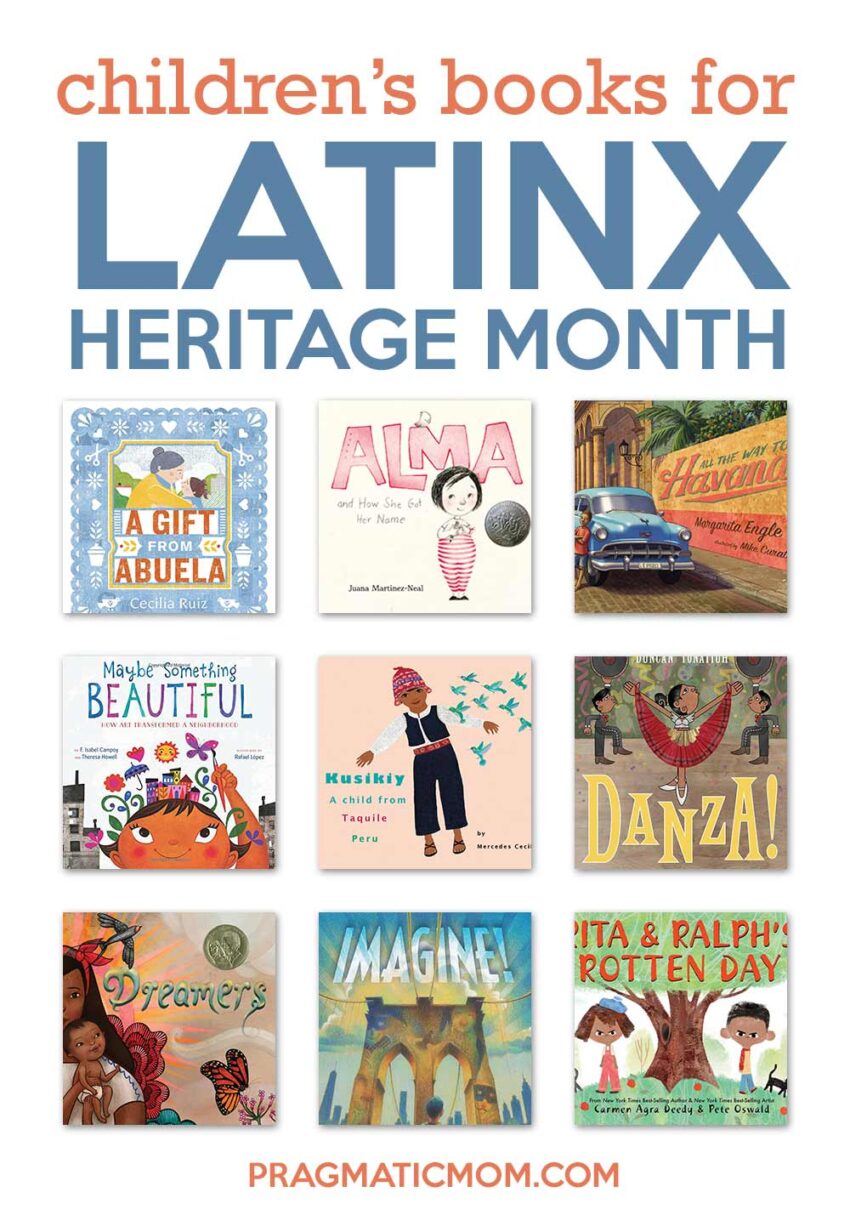
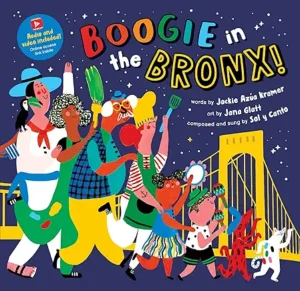
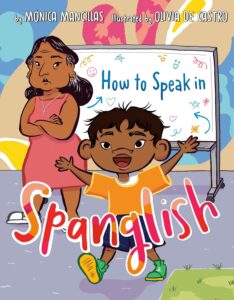
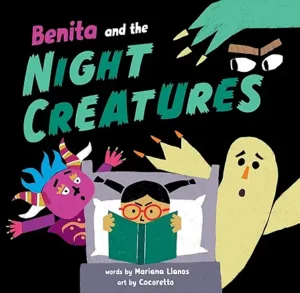
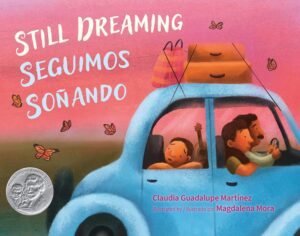
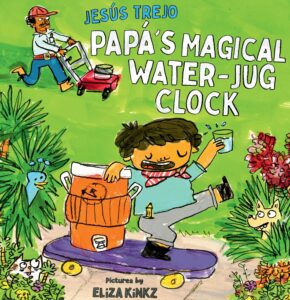
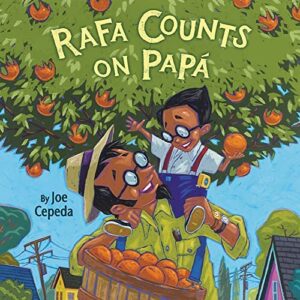
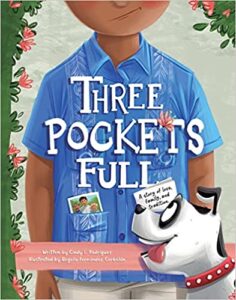
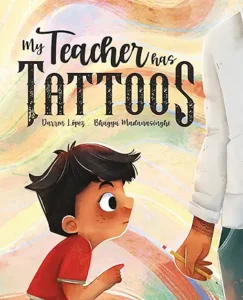
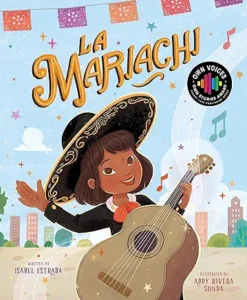
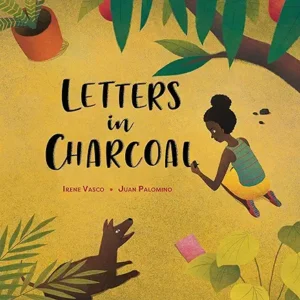
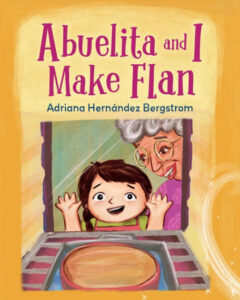
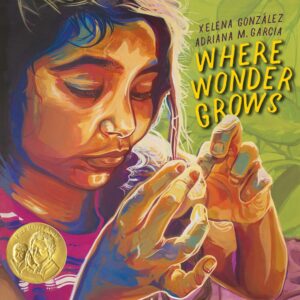
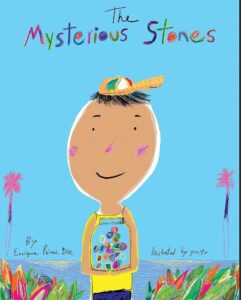
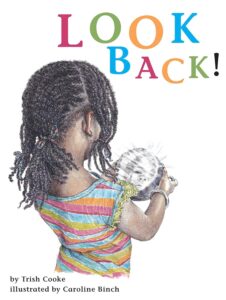
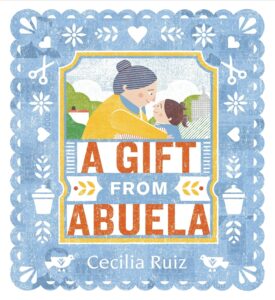
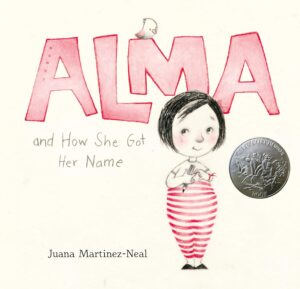
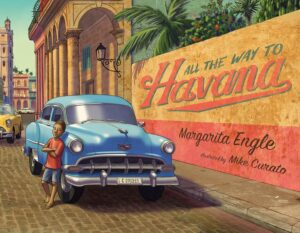
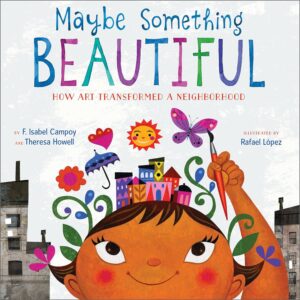

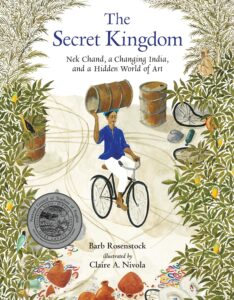


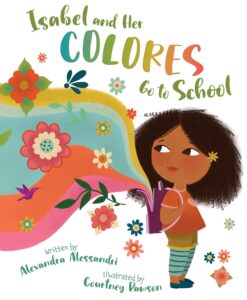
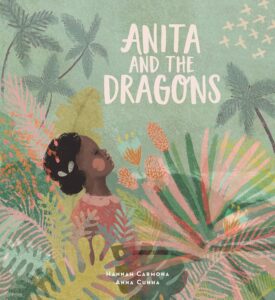
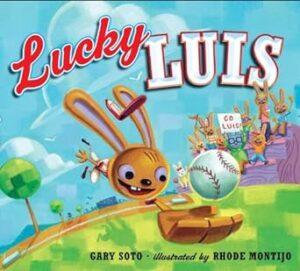

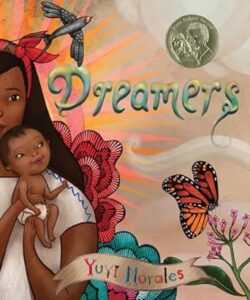
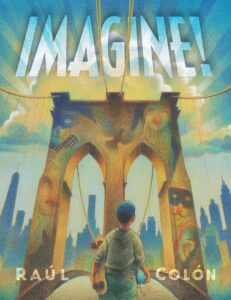
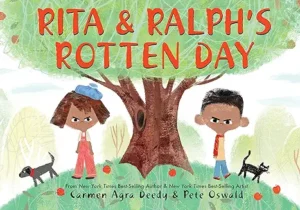
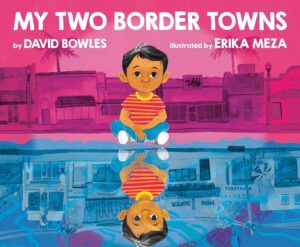
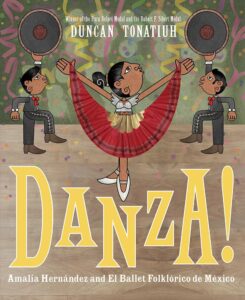
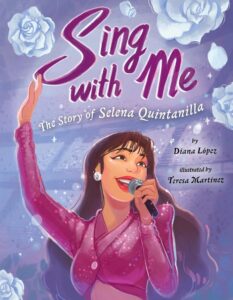
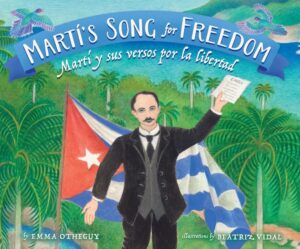
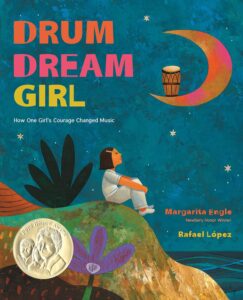
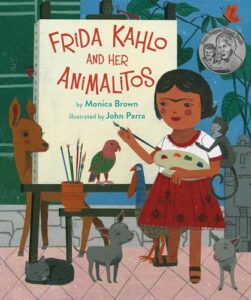
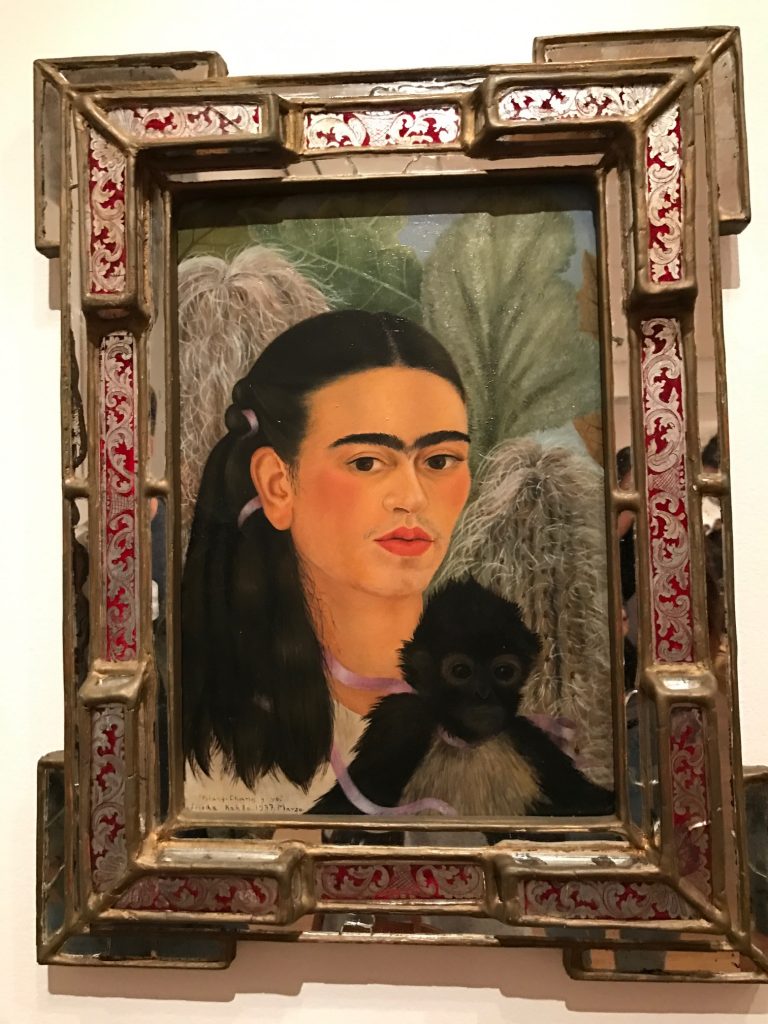
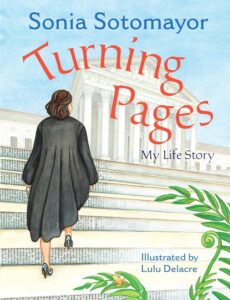
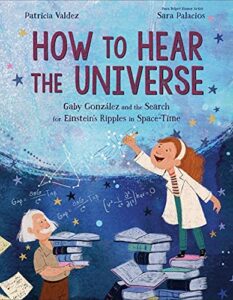
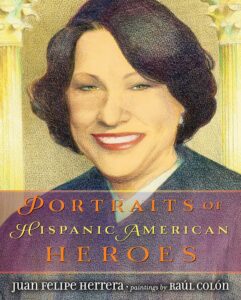
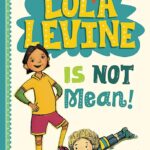
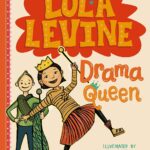
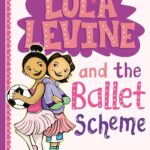


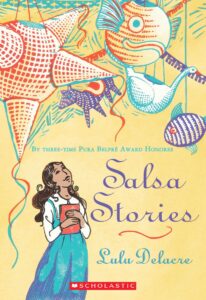
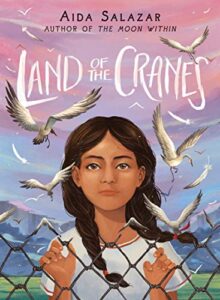


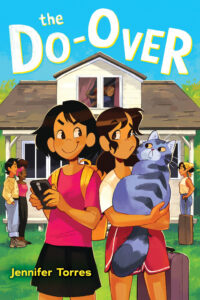
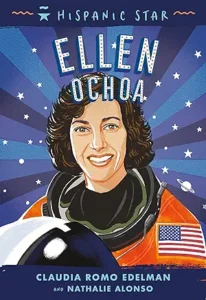
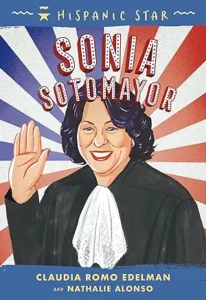
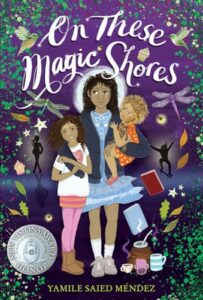
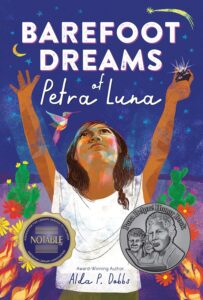
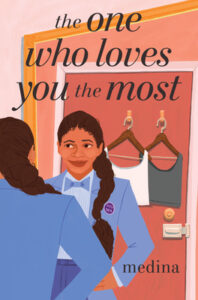
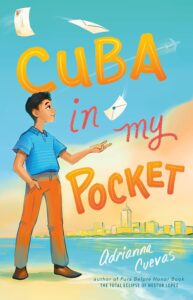
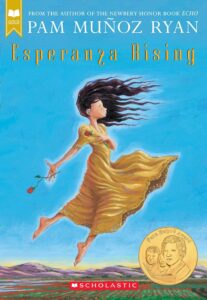
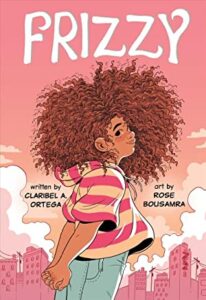
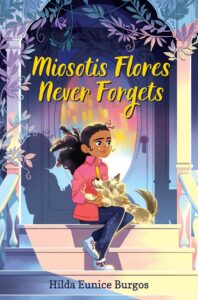
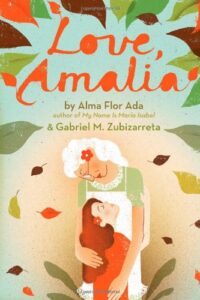
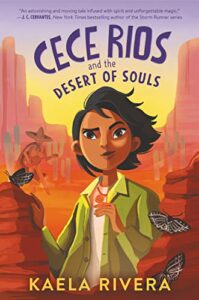
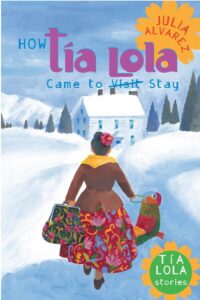
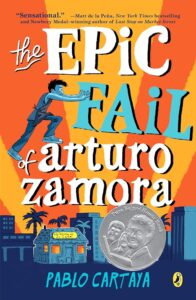
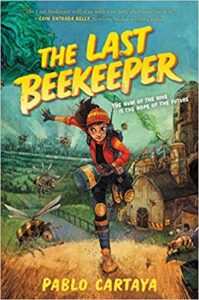
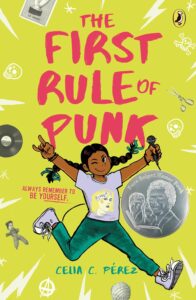
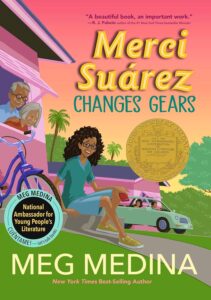
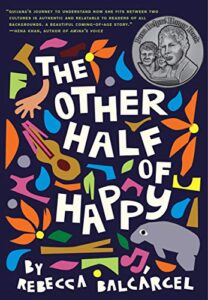
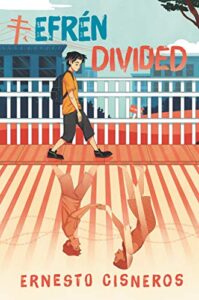
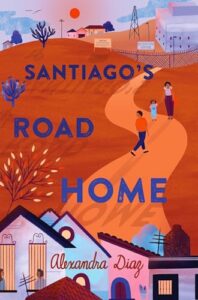
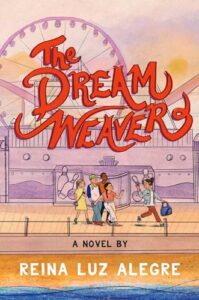
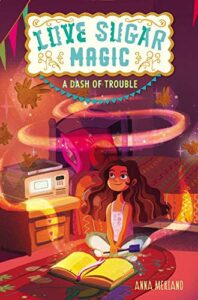
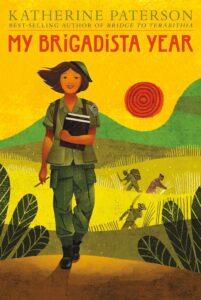

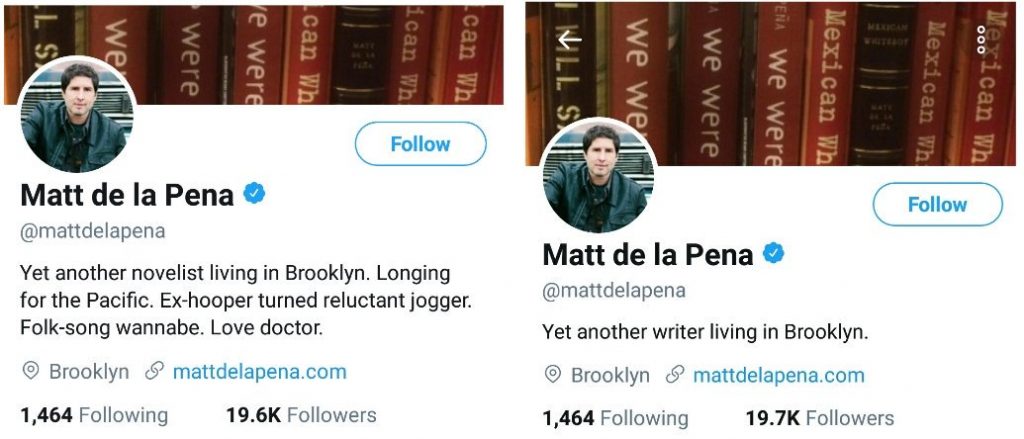


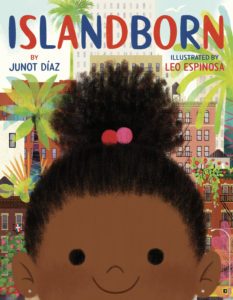























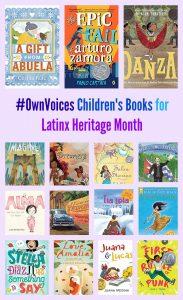
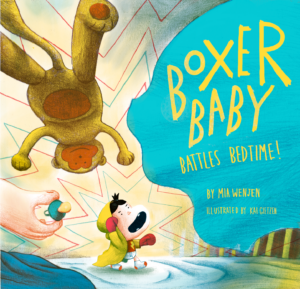
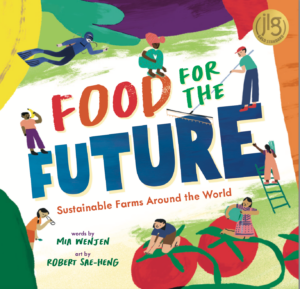

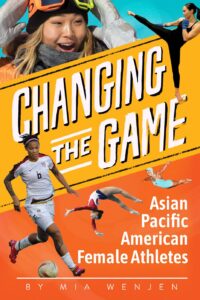
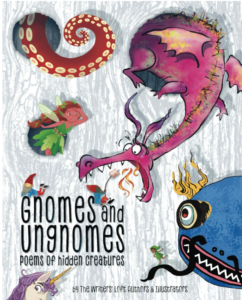

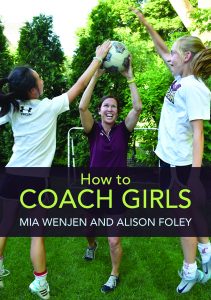

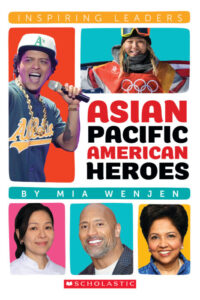

I’m really excited for Anika Denise’s PB bio on Pura Belpre called Planting Stories!! It looks wonderful and the cover art by Paola Escobar is so stunning! She also has the Starring Carmen! series for young readers which are cute books.
Me too! I loved the illustrations. I only have heard about her from the children’s book award and I’m excited to learn more about her life.
This is an amazing resource! I will definitely use it as a resource and will share it with teachers, parents, and librarians.
Thanks so much Claire! Much appreciated!!!